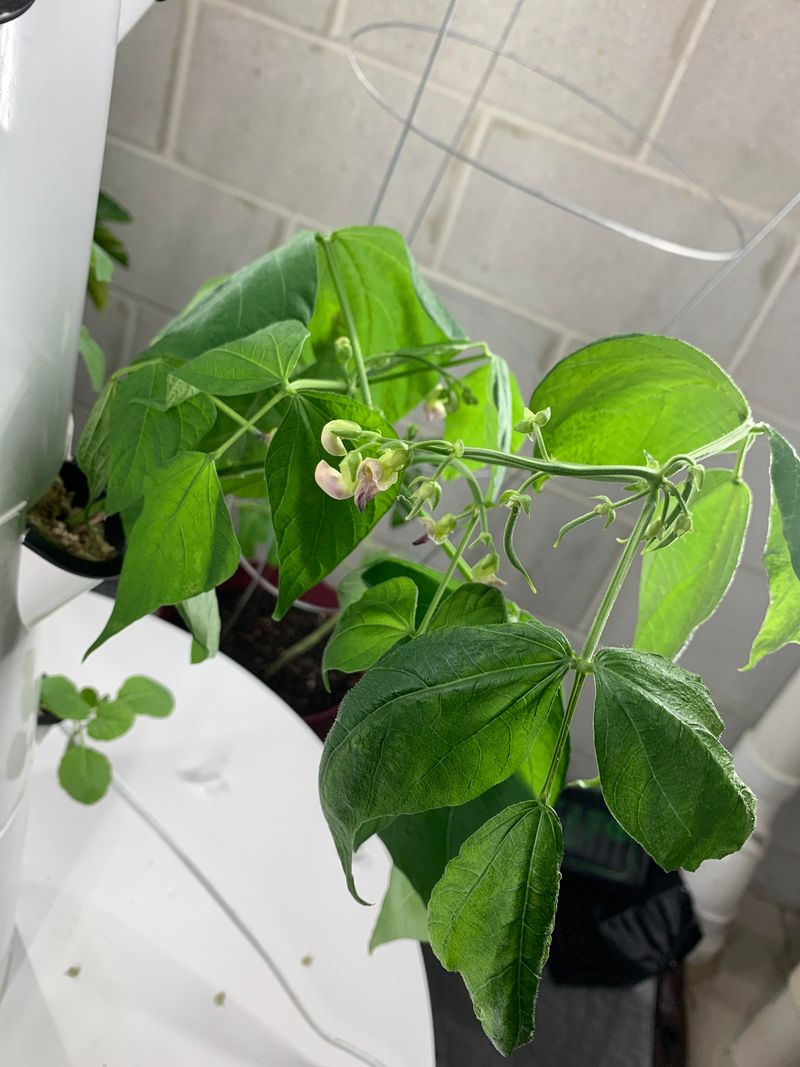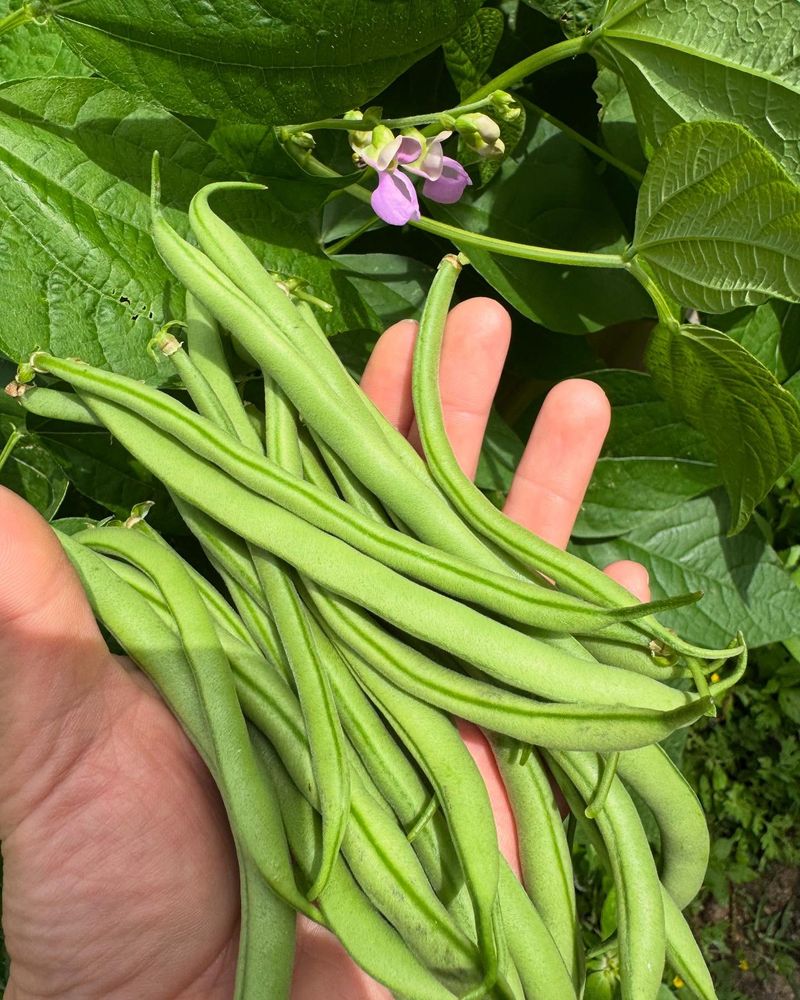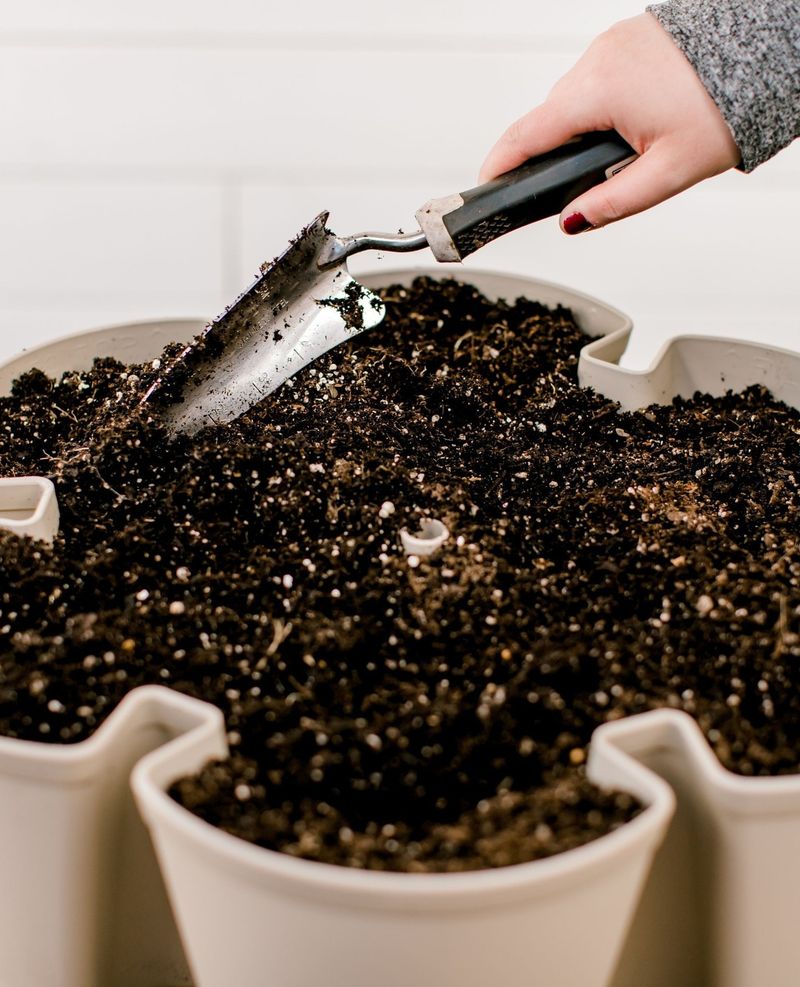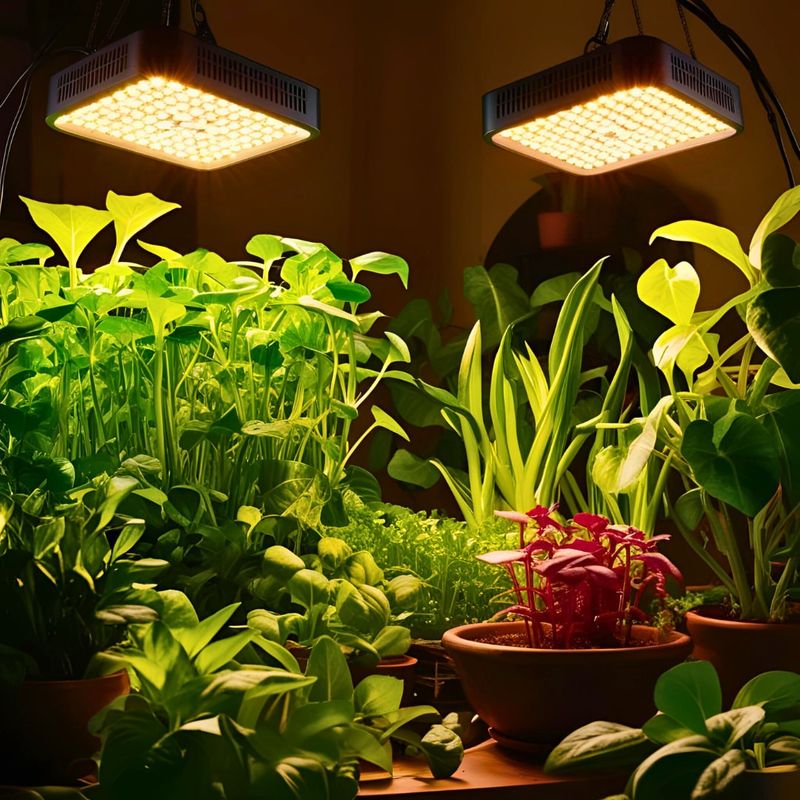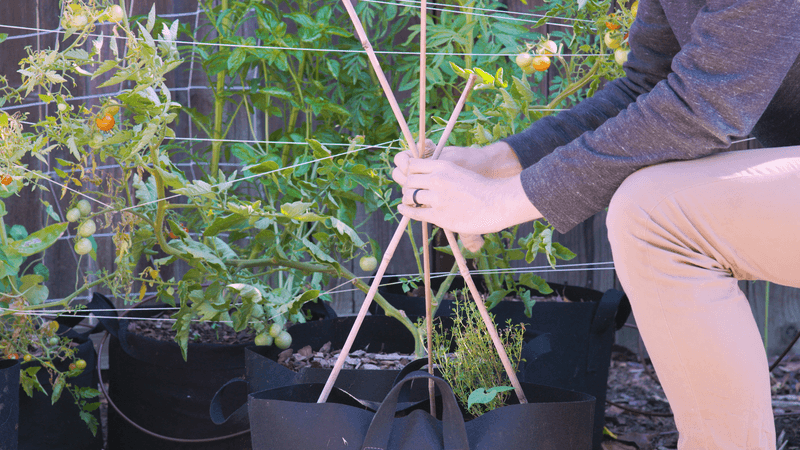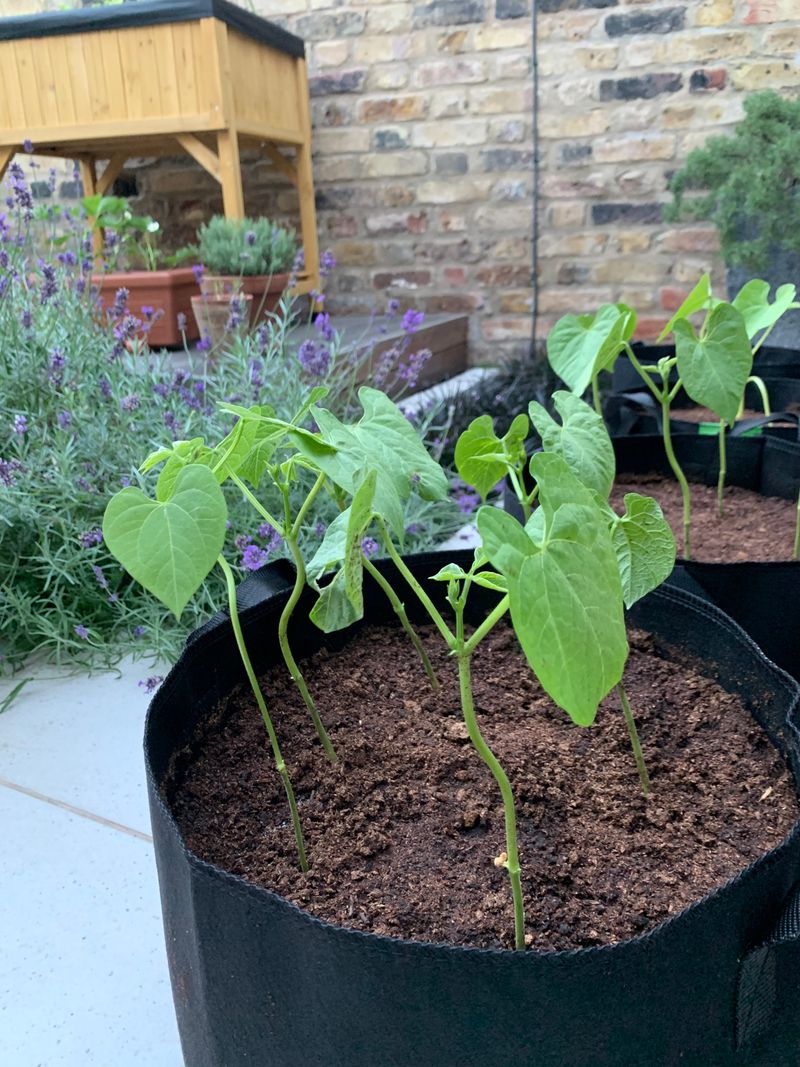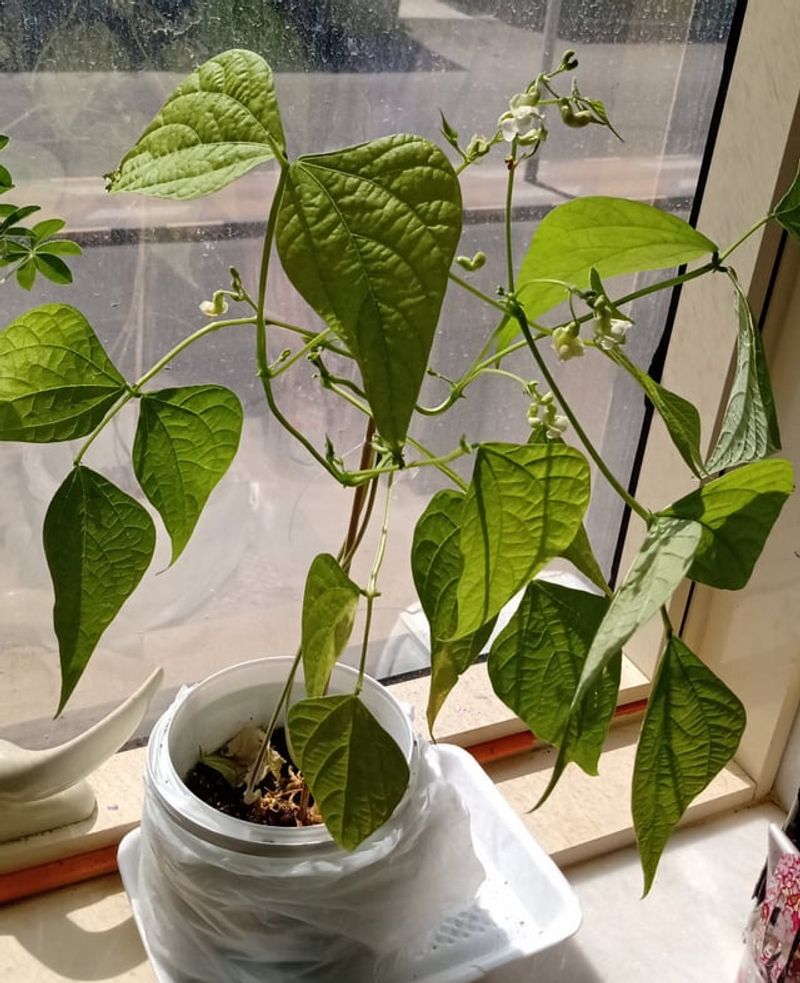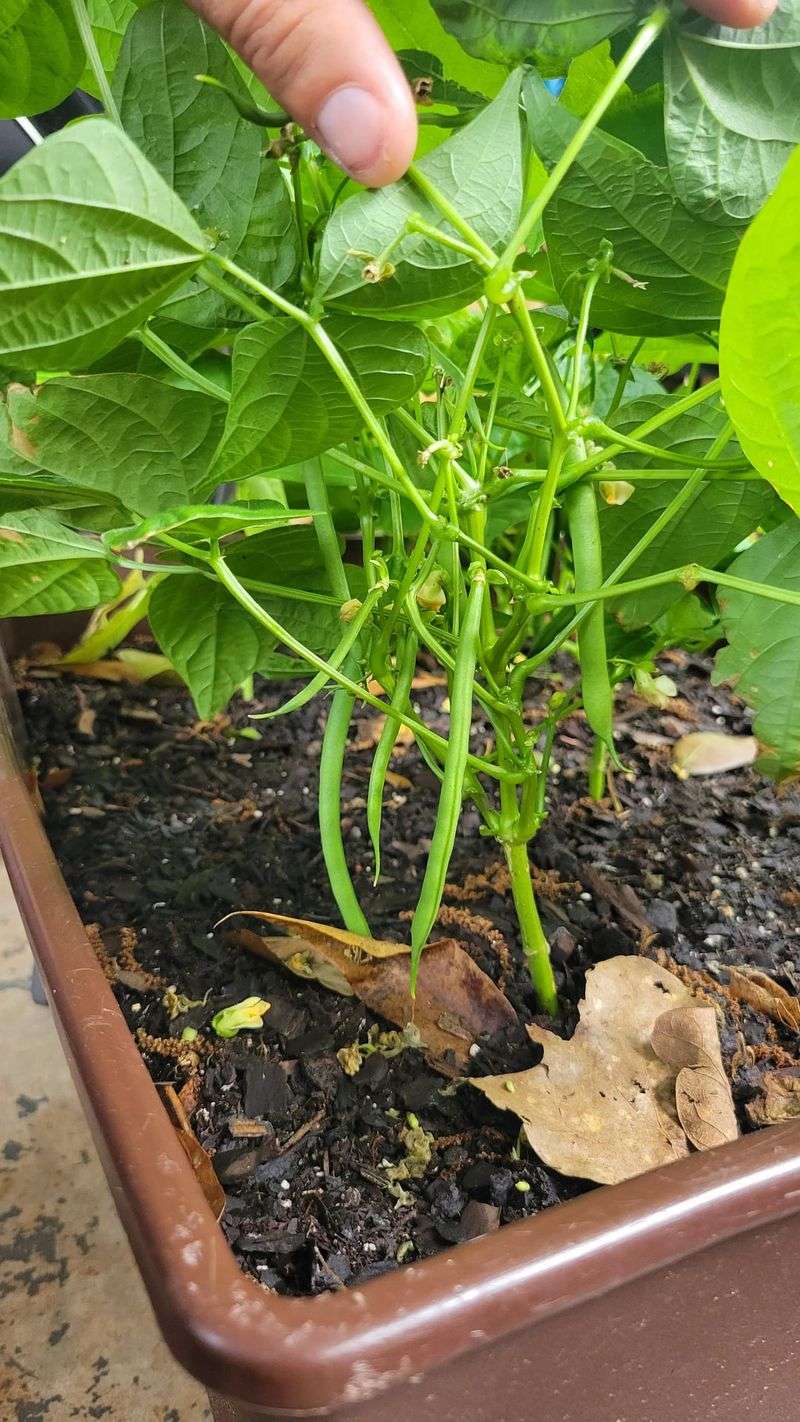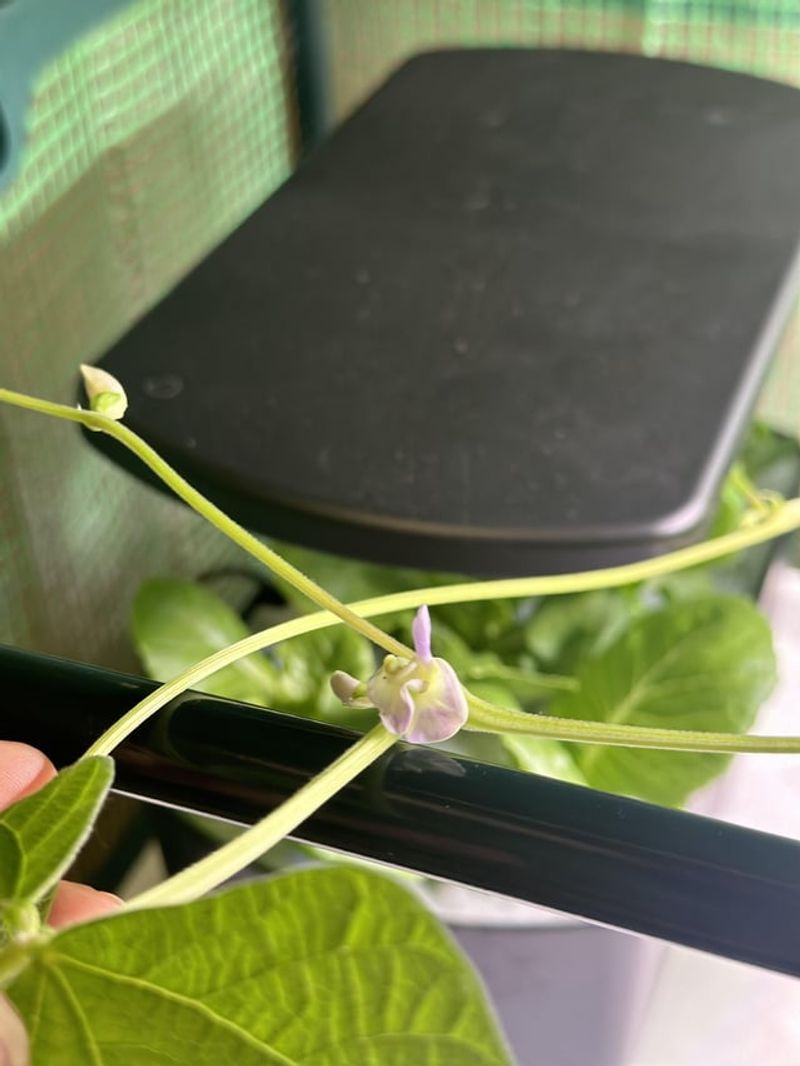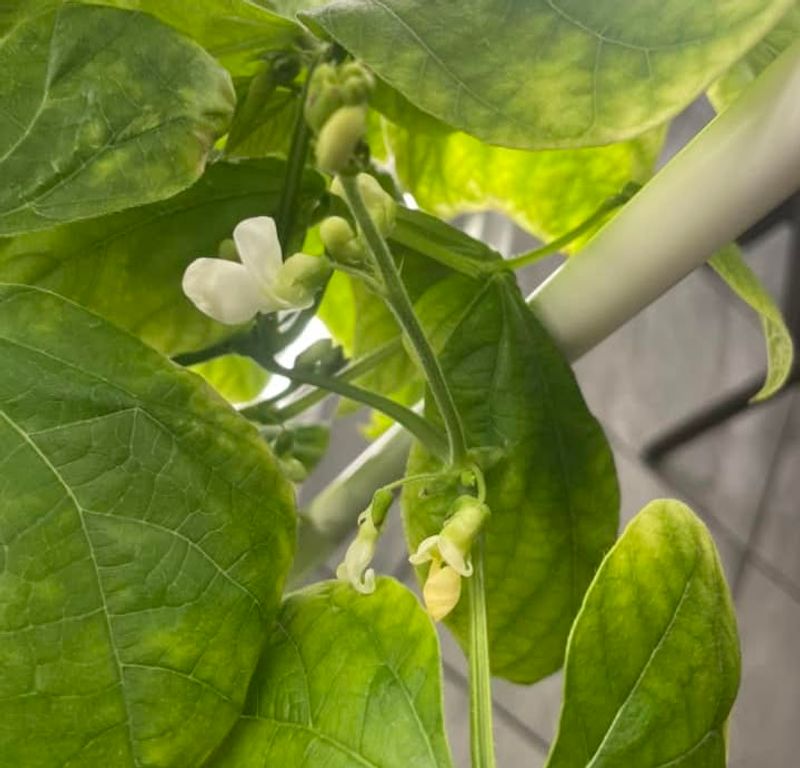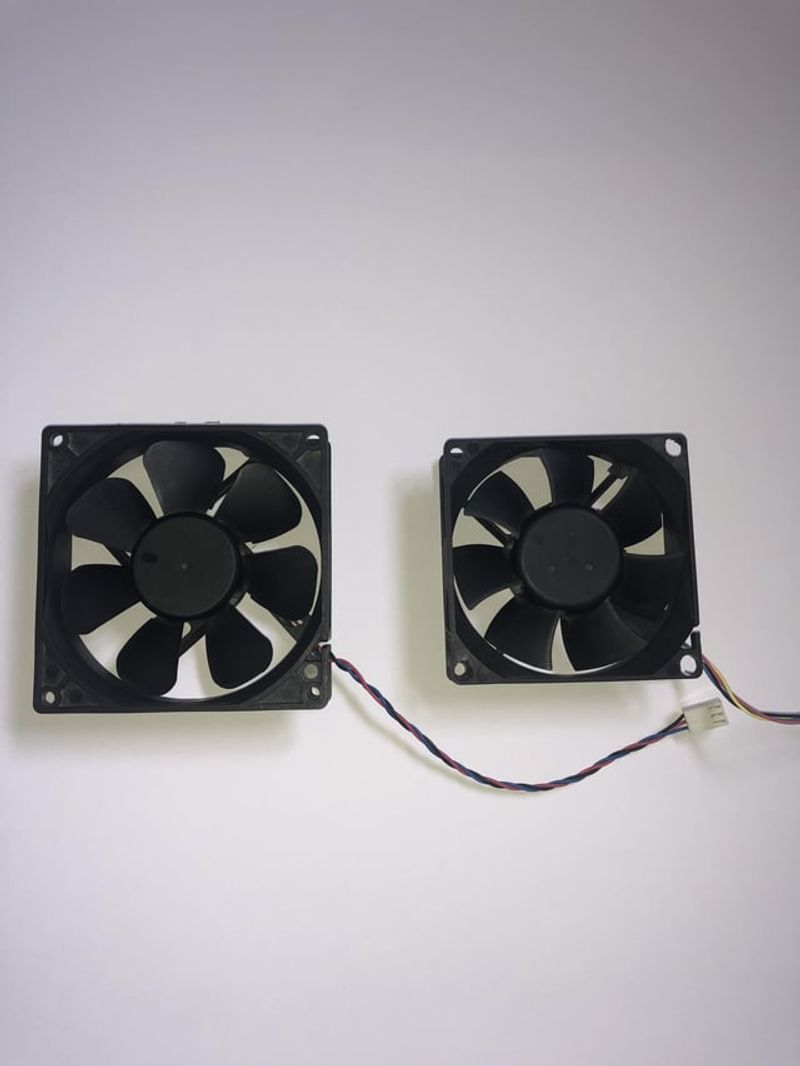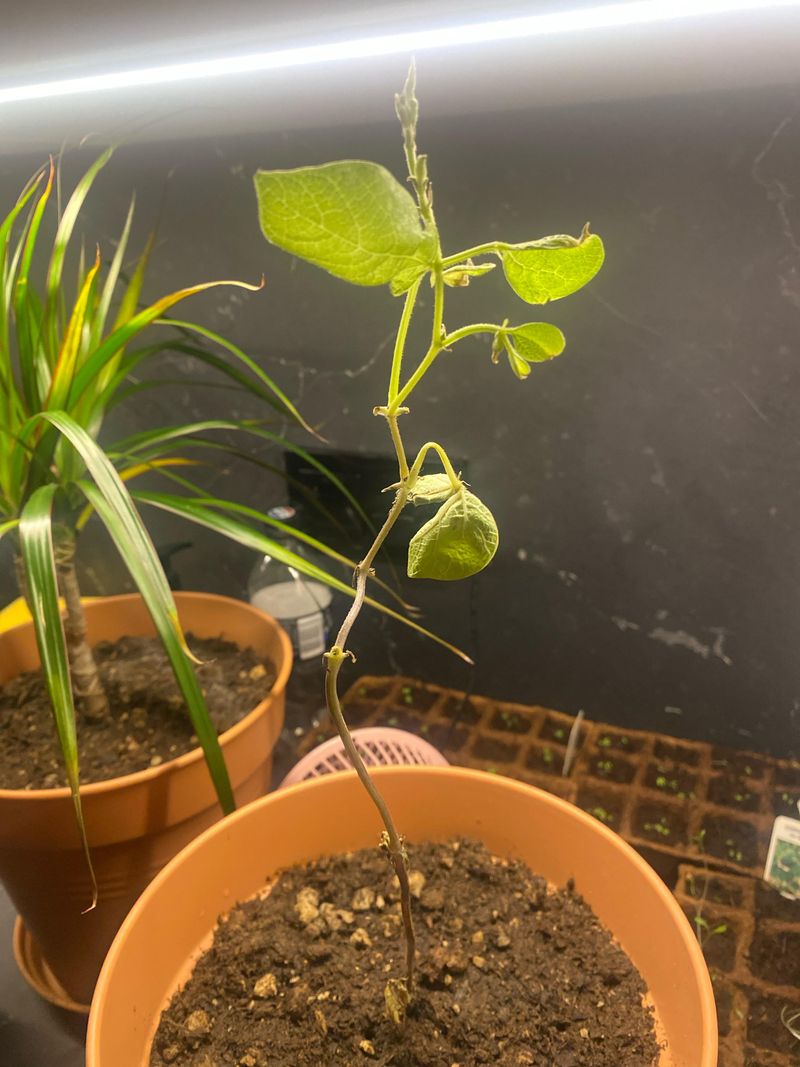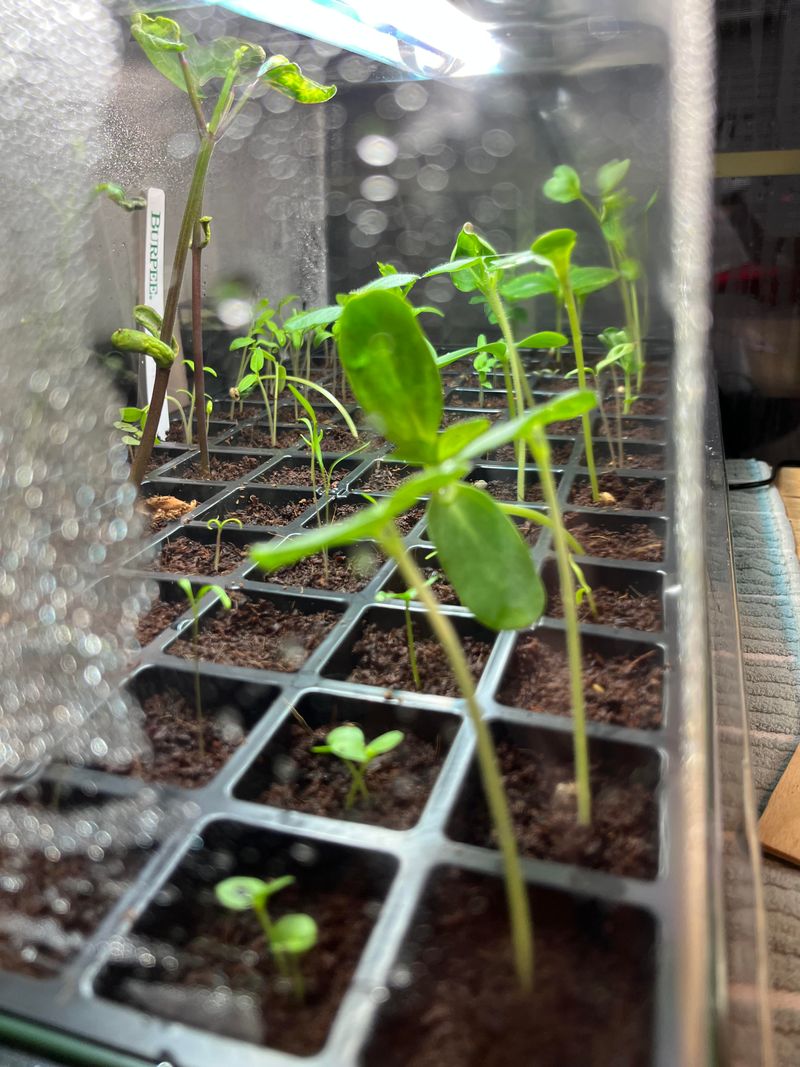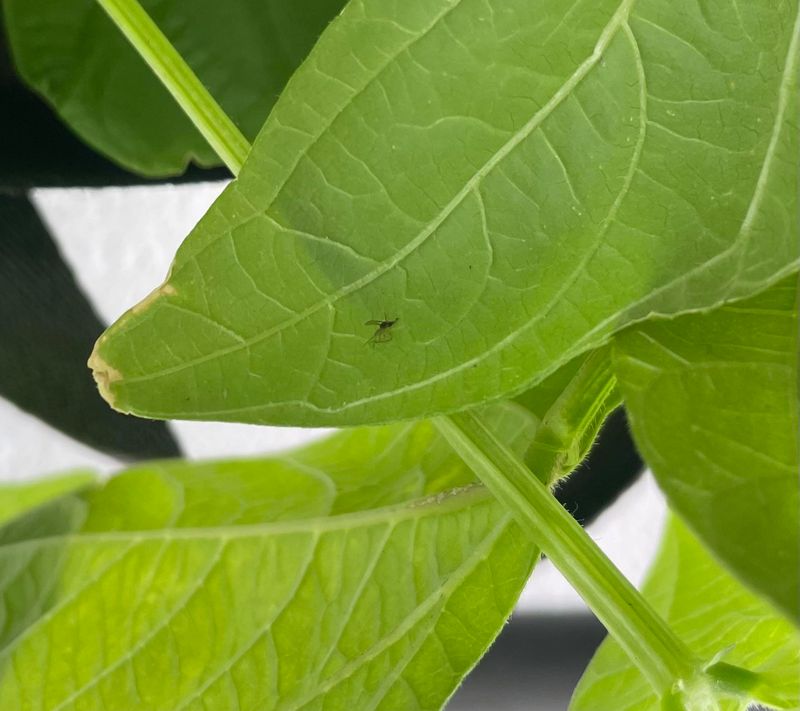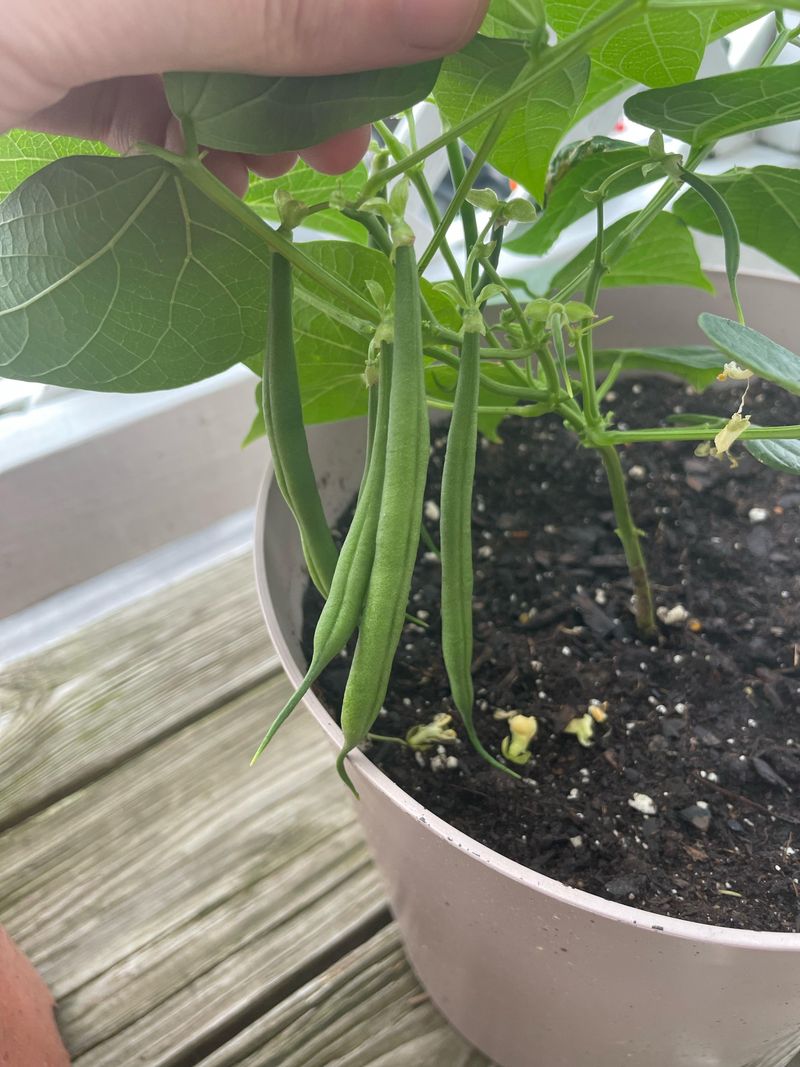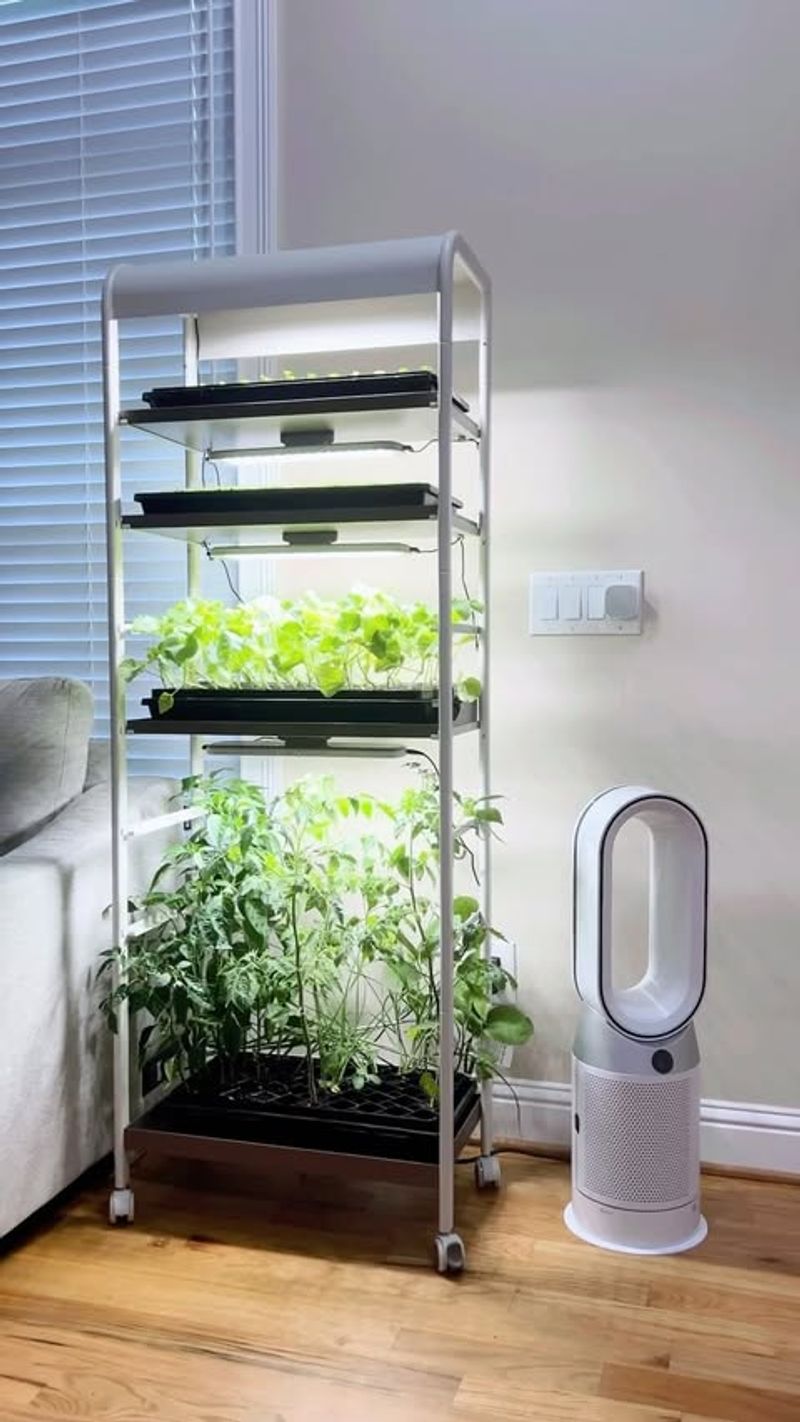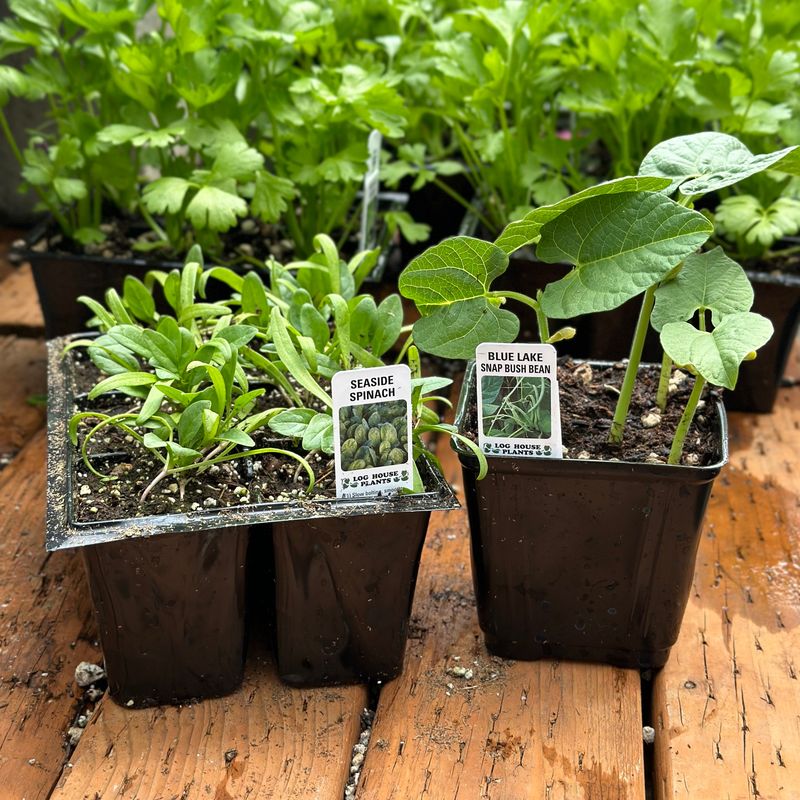Growing green beans indoors was something I tried on a whim—and I was surprised by how easy and satisfying it turned out to be. If you live in an apartment or just don’t have much outdoor space, this is a great way to keep gardening alive year-round.
Even without a sunny window, green beans can do surprisingly well with a little support and a decent grow light. I started mine in pots on a shelf and within weeks, they were climbing and flowering like champs.
If you’re craving the taste of fresh beans but short on space, give indoor growing a shot. With just a bit of care, you’ll be picking crisp pods from your living room in no time.
1. Choose The Right Container
Deep containers work best for bean plants since their roots need room to stretch out. A pot that’s at least 8 inches deep provides adequate space for proper development.
Make sure your container has drainage holes at the bottom. Without proper drainage, roots can rot quickly, killing your plants before they have a chance to produce.
I started with a repurposed 5-gallon bucket with holes drilled in the bottom – not pretty, but my plants didn’t seem to mind the humble home!
2. Select Suitable Bean Varieties
Bush bean varieties typically work better indoors than pole beans because they’re more compact and don’t require extensive trellising. Look for varieties like ‘Provider’ or ‘Contender’ that mature quickly.
Dwarf varieties are particularly well-suited for indoor growing. These compact plants produce full-sized beans without taking up excessive space in your home.
Last winter, my ‘Mascotte’ bush beans thrived on my kitchen counter, producing tender beans in just 50 days despite the limited light conditions.
3. Use Quality Potting Mix
Regular garden soil compacts too easily in containers, restricting root growth and water flow. Instead, use a high-quality potting mix specifically formulated for containers.
Adding about 20% compost to your potting mix provides nutrients that help beans thrive. Since beans fix nitrogen in soil, they don’t need nitrogen-heavy fertilizers, but they do appreciate good organic matter.
The first time I grew indoor beans, my plants struggled until I switched from garden soil to proper potting mix – the difference was remarkable within just a week!
4. Provide Artificial Lighting
Without a sunny windowsill, grow lights become essential for indoor bean plants. Position LED or fluorescent grow lights about 6-12 inches above your plants for optimal growth.
Set your lights on a timer for 12-14 hours daily to mimic natural sunlight patterns. This consistent light schedule helps beans develop properly and produce higher yields.
My first setup used inexpensive shop lights with full-spectrum bulbs hung from a simple shelf unit – not fancy, but my beans produced just as well as my friend’s expensive setup!
5. Create A Simple Support System
Even bush varieties benefit from light support as they grow and produce beans. Small bamboo stakes or repurposed chopsticks work well for indoor container plants.
For pole varieties, create a simple teepee structure using bamboo stakes or dowels. Secure them together at the top with twine or a rubber band for stability.
After my beans flopped over one season, I started using old chopsticks collected from takeout orders – they’re the perfect size for supporting indoor bush beans and cost absolutely nothing!
6. Master Proper Watering Techniques
Consistent moisture is key for bean plants, but overwatering leads to root rot. Check the soil moisture by inserting your finger about an inch deep – water only when it feels dry at that depth.
Water at the base of plants rather than overhead to prevent fungal issues. Indoor environments lack natural airflow, making plants more susceptible to disease if leaves remain wet.
My moisture meter was worth every penny for my indoor garden – before getting one, I killed more plants from overwatering than any other cause!
7. Maintain Ideal Temperature Range
Most homes provide suitable temperatures for growing beans, which prefer 65-85°F. Avoid placing containers near drafty windows or heat sources that create temperature fluctuations.
Bean seeds germinate best at warmer temperatures around 70-80°F. Using a seedling heat mat can speed up germination if your home tends to be on the cooler side.
During winter months, I noticed my beans growing slower until I moved them away from a slightly drafty window – even small temperature variations can affect growth rates significantly.
8. Boost Humidity Levels
Indoor environments, especially in winter with heating systems running, often have low humidity that can stress plants. Grouping plants together naturally increases humidity around them.
A simple humidity tray helps maintain moisture levels. Fill a shallow tray with pebbles, add water below the pebble line, and place your containers on top – as water evaporates, it creates a humid microclimate.
During one particularly dry January, my bean leaves started curling until I implemented pebble trays – within days, the new growth appeared perfectly healthy and vibrant.
9. Implement Hand Pollination
Indoor bean plants lack natural pollinators like bees and wind. Gently shaking your plants daily when they’re flowering helps distribute pollen and improves fruit set.
For more thorough pollination, use a small paintbrush to transfer pollen between flowers. Lightly brush the inside of each flower, moving from one to another to mimic bee activity.
My bean production doubled after I started spending just 30 seconds each morning gently shaking my flowering plants – such a small effort for such a significant yield increase!
10. Rotate Plants Regularly
Plants naturally grow toward light sources, which can result in leggy, uneven growth indoors. Rotating containers a quarter turn every few days encourages balanced, sturdy growth.
Even under grow lights, rotation helps ensure all parts of the plant receive equal light exposure. This practice leads to stronger stems and more uniform bean production.
Setting a reminder on my phone helped me remember this simple task – after forgetting for a week, I returned to find my beans dramatically leaning toward the light source like botanical sun-worshippers!
11. Increase Air Circulation
Stagnant air creates perfect conditions for fungal diseases and pests. A small oscillating fan set on low provides gentle air movement that strengthens stems and reduces disease risk.
Position the fan to create indirect airflow rather than blowing directly on plants. Even 15-20 minutes of air circulation twice daily can significantly improve plant health.
After battling powdery mildew on my first indoor bean attempt, I added a small desk fan to my setup – I haven’t seen a speck of mildew since implementing this simple solution.
12. Feed With Balanced Fertilizer
Beans need less nitrogen than other vegetables since they fix their own from the air. Look for fertilizers with lower first numbers in the NPK ratio, like 5-10-10, to avoid excessive leafy growth at the expense of bean production.
Liquid fertilizers diluted to half-strength work well for container beans. Apply every 2-3 weeks during the growing and fruiting stages for best results.
My homemade compost tea became a weekend ritual for my indoor garden – the plants seemed to perk up noticeably within hours of each feeding session.
13. Practice Succession Planting
Starting new bean plants every 2-3 weeks ensures continuous harvests throughout the year. This method prevents gaps in production that typically occur with single plantings.
Dedicate different containers to different planting dates rather than mixing ages in one pot. This approach allows you to tailor care to each growth stage appropriately.
Keeping a simple calendar of my planting dates revolutionized my indoor bean harvests – instead of feast-or-famine cycles, we now enjoy fresh beans almost every week of the year.
14. Monitor For Pests Vigilantly
Indoor plants aren’t immune to pests – aphids, spider mites, and whiteflies can still find their way to your beans. Inspect the undersides of leaves weekly, where pests often hide and multiply.
Yellow sticky traps help monitor and reduce flying pest populations. Place them near, but not touching, your plants to catch whiteflies and fungus gnats before infestations develop.
The magnifying glass I keep by my indoor garden has saved countless plants – catching two spider mites early is infinitely easier than battling two hundred later!
15. Harvest Frequently And Properly
Regular harvesting stimulates plants to produce more beans. Pick beans when they’re young and tender, before seeds inside become too pronounced and pods get stringy.
Use scissors or pruning shears rather than pulling beans from plants. Gentle harvesting prevents damage to stems and nearby developing pods that could reduce future yields.
The satisfaction of snipping fresh beans directly into our dinner salad makes all the indoor gardening effort worthwhile – you simply can’t buy that level of freshness at any store!
16. Maximize Vertical Growing Space
Utilizing vertical space allows for more plants in limited areas. Wall-mounted shelving units with grow lights at each level create multiple growing tiers in the same footprint.
Hanging containers work well for trailing bean varieties. Secure them properly from ceiling hooks or curtain rods, ensuring they receive adequate light from above or sides.
My apartment’s unused corner transformed into a productive bean tower using an old bookshelf with lights clamped to each shelf – visitors are always amazed at how much food comes from such a small area!
17. Create A Microclimate With Other Plants
Grouping plants together creates beneficial microclimates with higher humidity and more stable temperatures. Place beans alongside herbs or leafy greens with similar light and water needs.
Avoid combining beans with plants that attract pests or have dramatically different care requirements. Tomatoes make good companions while moisture-loving ferns would create conflicting conditions.
My indoor bean and basil combination has been particularly successful – they seem to thrive in each other’s company, and harvesting ingredients for pesto and green beans for a side dish simultaneously feels like garden-to-table magic!


